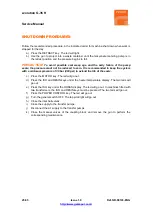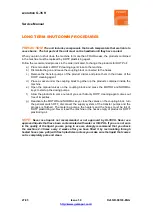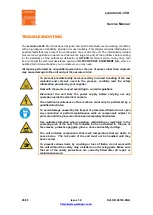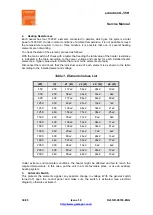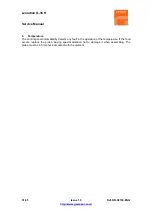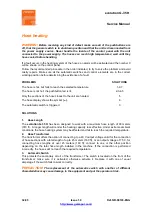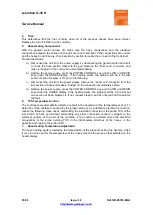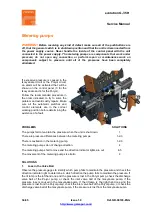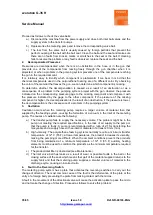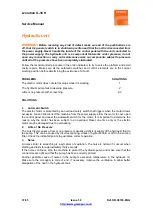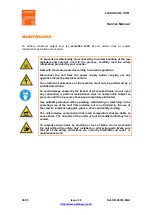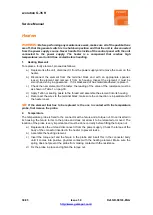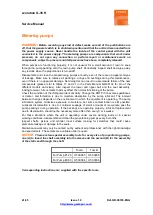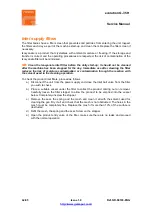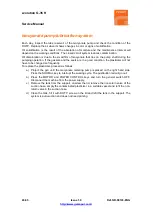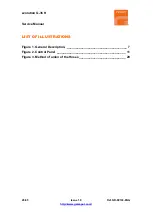
evolution G-35 H
Service Manual
39/45
Issue 1.9
Ref. NR-00103-ENG
http://www.gamapur.com/
Heaters
WARNING!
Before performing any maintenance work, make sure all of the pushbuttons
are off, that the general switch is in shutdown position and that the unit is disconnected
from the power supply source. Never handle the inside of the control panel with the unit
connected to the power supply. The heater is a component that reaches high
temperatures; wait until it has cooled before handling.
1.
Heating Elements
To replace a faulty element, proceed as follows:
a) Depressurise the unit, disconnect it from the power supply and remove the cover on the
heater.
b) Disconnect the element from the terminal block and with an appropriate spanner,
loosen the element and remove it from its housing. Inspect the element; it must be
smooth and shiny in appearance. If it is blackened or has material adhered, replace it.
c) Check the new element with a tester: the reading of the value of the resistance must be
as shown in Table 1 on pag.30.
d) Apply Teflon or sealing paste to the thread and assemble the element into its housing.
e) Reconnect the wires to the terminal block; make sure the connection is in parallel and fit
the heater cover.
NB:
If the element that has to be replaced is the one in contact with the temperature
probe, first remove the probe.
2.
Temperature
The temperature probe is fixed to the connector with a ferule and a torque nut. Once inserted in
its housing, the ferule forms to the probe and does not allow it to be relocated or moved. The
location of the probe is very important and must be done correctly before fitting the torque nut.
a) Depressurise the unit and disconnect it from the power supply. Check the torque of the
body of the connector inserted in the heater to prevent leaks.
b) Assemble the heating element.
c) Insert the torque nut and the ferule in the probe and insert this in the connector body
until it comes into positive physical contact with the heating element. Make sure the
spring does not prevent the probe from making contact with the resistance.
d) Fix the probe in place and tighten the torque nut.

